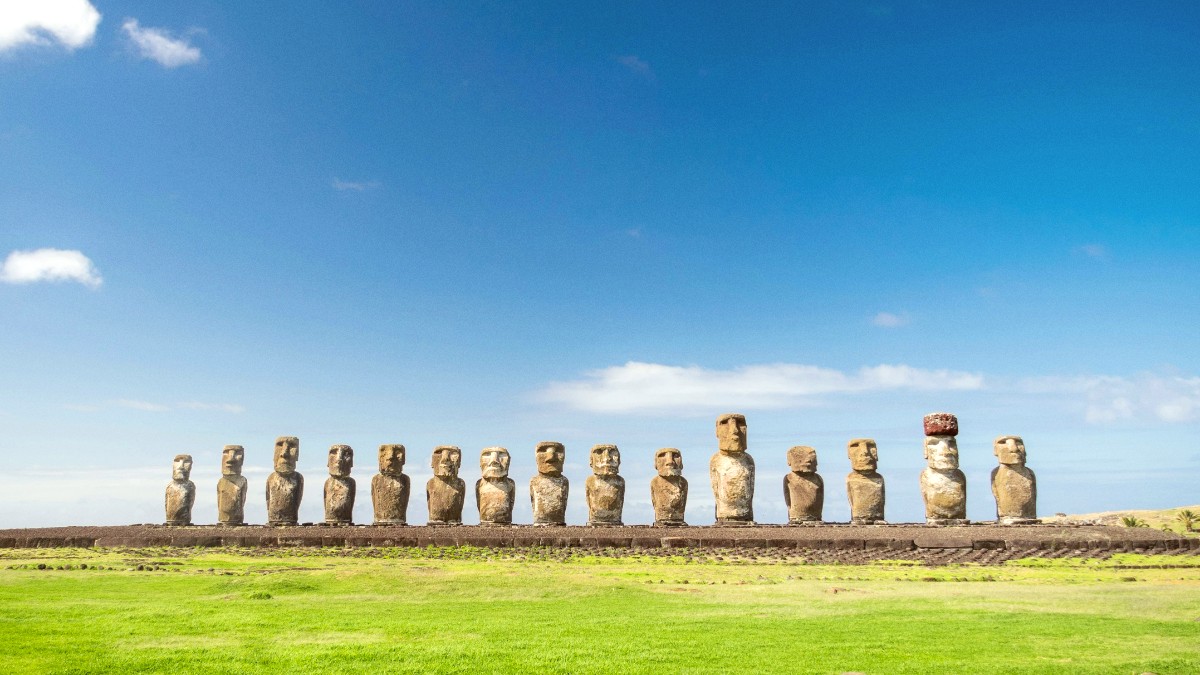
Chile
Rapanui cuisine is greatly shaped by Polynesian traditions, with strong ties to the sea and local agriculture. The historical diet included fish, various seafood, chicken, and root vegetables like taro, sweet potato (kumara), and yam.
The traditional cooking method is "umu," an earth oven resembling a Polynesian hāngi. This method entails slow-cooking food over hot stones, infusing it with earthy flavors.
Lunch (almuerzo) is usually the main meal, eaten between 1 PM and 3 PM. Dinner (cena) is typically later, from 8 PM onwards, a reflection of Chilean dining habits.
A 10% tip is customary in restaurants for good service. Many places add a "propina" (tip) suggestion to the bill; check before paying.
Service can be slower than in mainland cities. Embrace the relaxed island pace and enjoy the atmosphere.
A fried or baked pastry with fresh tuna, often mixed with onion and spices. Ubiquitous and a staple snack.
Find at snack bars and small eateries throughout Hanga Roa.
A traditional Rapanui cake from pumpkin or banana, flour, and coconut milk. Baked or steamed.
Look for it at local eateries and bakeries.
Fresh raw fish, often tuna, marinated in lime juice with onion, cilantro, and sometimes coconut milk. Coconut milk gives it an unique twist.
Widely available at seafood restaurants.
A sweet, dense cake from pumpkin or banana, flour, and coconut milk.
Various desserts incorporate coconut, with sweet and tropical flavors.
A few higher-end restaurants in Hanga Roa give refined takes on local and international cuisine.
This is the most common dining option, a good balance of quality and price.
Small "picadas" (local diners), snack bars, and informal stands, especially near the port, serve affordable meals.
Vegetarian options are usually available, like vegetable empanadas, salads, and rice/vegetable dishes.
Vegan options are more challenging and call for clear communication.
Awareness of specific allergens is not high. Travelers with severe allergies or celiac disease should carry a Translation card.
Halal and kosher options are extremely limited, likely non-existent. Self-catering is advised.
Some local guides or accommodations might offer informal cooking demonstrations or "umu" experiences. Inquire locally.
Visits to small farms or learning about "manavai" (stone-lined gardens) can be arranged via local guides.
The Tapati Rapa Nui Festival in early February features traditional food preparation and feasting.
The "umu" earth oven experience is an unique traditional dining concept. Some restaurants pair meals with live music and dance.
Casual dining for lunch. Many places offer outdoor seating.
Enjoy the relaxed island pace.
More formal atmosphere for dinner, especially at higher-end restaurants.
Live music is sometimes present at selected venues.
Consider trying a "menú del día" for lunch for good value and a taste of local cooking.
Experiment with different fish types, each with a distinct texture and flavor.
Some restaurants offer basic Italian dishes like pizza and pasta, popular with children.
Grilled chicken or fish with rice or fries are often available and generally well-received by kids.
Fruits like bananas, pineapple, and papaya are fresh and locally grown.
Especially helpful with younger children.
Many restaurants offer outdoor seating, which is comfortable for families and children.
Check for shaded areas on sunny days.
Introduce children to local tropical fruits available at the market.
Tuna empanadas are a popular and easy-to-eat snack for kids.
Look for local bakeries that sell Po'e or coconut-based desserts.
While most dining is in Hanga Roa, a few isolated eateries exist near major sites like Anakena Beach.